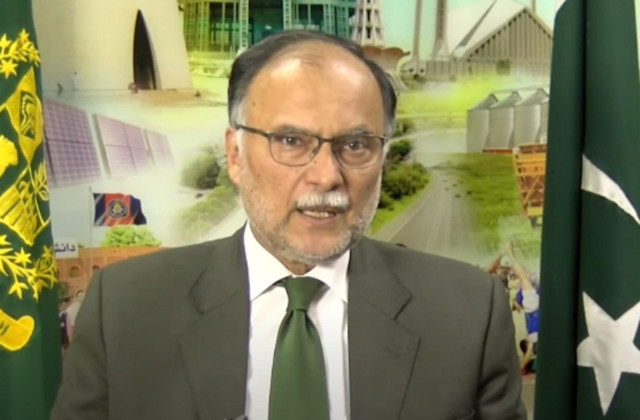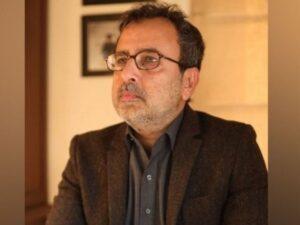Islamabad:
The latest agriculture census revealed that 97% of Pakistan farmers have less than 12.5 acres of land and that the size of a farm has also decreased, which, according to the Minister of Planning, Ahsan Iqbal is a question of concern due to the economy reduction scale.
There were only 16,958 owners in Pakistan who had more than 100 acres of land and held 6.2% of the total agricultural land, according to the 7th census that Pakistan Bureau of Statistics accomplished after a difference of 15 years. The average land ownership of these owners was 215 acres per person.
The 7th national census of agriculture and livestock has given rare information on the mainly informal sector of the economy, in particular trends on the use of water, culture culture, land funds and the penetration of livestock in various provinces.
Iqbal officially launched the results of the 7th agricultural census 2024 which, he said, was a benchmark in the statistical history of Pakistan covering agriculture, livestock and agricultural machines in a report.
Details have shown that 97% of the country’s total agricultural community has less than 12.5 acres of land and suggests that they fall into medium to medium income groups. Such small property properties do not generate enough resources to save money and these poor farmers live to cultivate.
In 2010, 89% of farmers had less than 12.5 acres in land. A major reason was the inherited land division and the sale of properties to meet certain major expenses, according to people who have made the census.
There were 26% of farmers who had even less than an acre of land, a ratio which was only 15% in 2010. About 35% of the total farmers had less than 2.5 acres of land. In a word, 61% of farmers have less than 2.5 acres of land, which is not enough to ensure decent income for these poor due to obsolete agricultural techniques and low yields.
About 19% of farmers had less than five land acres, which is also too small to generate enough resources for people living mainly in villages with fewer facilities. Another tenth farmers had less than 7.5 acres of land and there were hardly 7% of farmers who actually owned 12.5 acres of land.
The average size of the farm rose from 6.4 to only 5.1 acres, which is a matter of concern, said Ahsan Iqbal speaking during the launch ceremony. The Minister of Planning said that such small sizes reduced the scale of the economy and minimize the prospects of corporate agriculture.
But he said that overall, the results of the census were encouraging and also would contribute positively to the country’s gross domestic product due to the possibility of actually measuring the results instead of relying on obsolete surveys.
Iqbal said that the census conclusions would help better plan the country’s small farmers.
According to the census, there was a significant increase in the cultivated area, which increased to 52.8 million, against 42.6 million at the time of the last census.
Overall, agriculture remains a key sector of the Pakistani economy, contributing significantly to GDP. About the livelihoods of 40 million people are directly linked to agriculture and 37.4% of the workforce used by the sector.
The census showed that there were about 20 million agricultural households and 98.5% were male heads.
The survey said that in 2024, Pakistan had approximately 11.7 million farms in total, much more than 8.3 million in 2010. Most farms were operated by the owner, or 10.4 million, against 6.74 million in 2010, which indicates a strong development towards the property of the farm.
Owner-Local farms have increased to only 550,000 and tenants’ farms also fell considerably to 770,000, showing a sharp reduction in rental-based agriculture.
In all the provinces, Punjab had the greatest number of farms at 5.1 million, but they were 217,000 less than 15 years ago. A possible reason for reducing agricultural numbers in Punjab was rapid urbanization in the province, said Ahsan Iqbal.
The growth of fungi of housing companies can be observed in Punjab and many of them are not properly planned or approved by the land authorities.
The KP has 4.2 million farms, Sindh 1.8 million and 630,000 Balutchistan, the majority in each province being the owner operating farms. Even in Islamabad, almost every 16,589 farms were operated by the owner.
In addition to an increase in the total number of farms, the total area of the farm has also passed, from around 52.9 million acres in 2010 to 59.3 million acres in 2024.
Similarly, the total cultivated area increased from around 42.6 million acres in 2010 to 52.8 million acres in 2024. On average, each farm in 2024 was approximately 5.1 acres, against 6.4 acres in 2010. The land cultivated by farm by the same farm of 5.2 acres in 2010 at 4.5 acres in 2024, reflecting the same trend of the average size of the farm.
In 2024, the total irrigated area of Pakistan was 45.9 million acres out of the total, 14.4 million acres were irrigated by the channels, against 12.3 million acres in 2010, according to the census.
A slight decrease was observed in combined irrigation methods, such as channels, tube wells, pumps, which reduced to 13.5 million acres in 2024. Punjab has the largest irrigated area with 27.1 million acres in total, followed by Sindh with 7.3 million acres. Although in KP and the baloutchistan areas are irrigated by the channel, other sources are also used. Interestingly, traditional methods like Rod Kohi and Karez are always functional in Balutchistan, according to the census.
Non -irrigated agriculture (fueled by rain) experienced a sharp decline to 4.9 million acres in 2024, compared to 8.4 million in 2010, reflecting an evolution towards irrigated agriculture nationally.
Short area
The total area of Pakistan increased significantly from 68 million acres in 2010 to 82.8 million acres in the 2024 census, showing increasing confidence in the agricultural sector. The short area is more than the total cultivated land of 52.8 million, because land can be used several times in one year depending on the cultures cycle.
Among all major cultures, the share of the wheat shortcut area remained the share of dominant cultures in the country, its contribution passing slightly from 42% to 43.3% in Global Pakistan. The rice cultivation area experienced a slight drop from 14% to 12.9%, while corn increased from 4% to 5.1%.
Cotton share fell 14% to 7.9%. The share of sugar cane in cropped areas also increased from 4% to 3.3%. The share of the fodder harvest increased slightly from 9% to 9.5%.
The chief statistician PBS Dr Naeem Uz Zafar explained that livestock holds the largest share of 63.6% in the total agriculture sector, followed by 32.6% of cultures.
Cattle
In 2024, the global population of Pakistan livestock reached 251.3 million, which was significantly higher than the last 2006 census. The chief statistician said that the livestock sector had shown an annual growth rate of 3.1% in 2024.
Punjab holds most with 104 million animals, leading cattle, buffaloes, horses and donkeys in Pakistan. The province of Balutchistan has 47.9 million animals in total out of 18.8 million sheep, which complies with difficult conditions such as the rarity of water.
Khyber-Pakhtunkhwa reported a total of 48.7 million inhabitants with 22.5 million highest goats.




